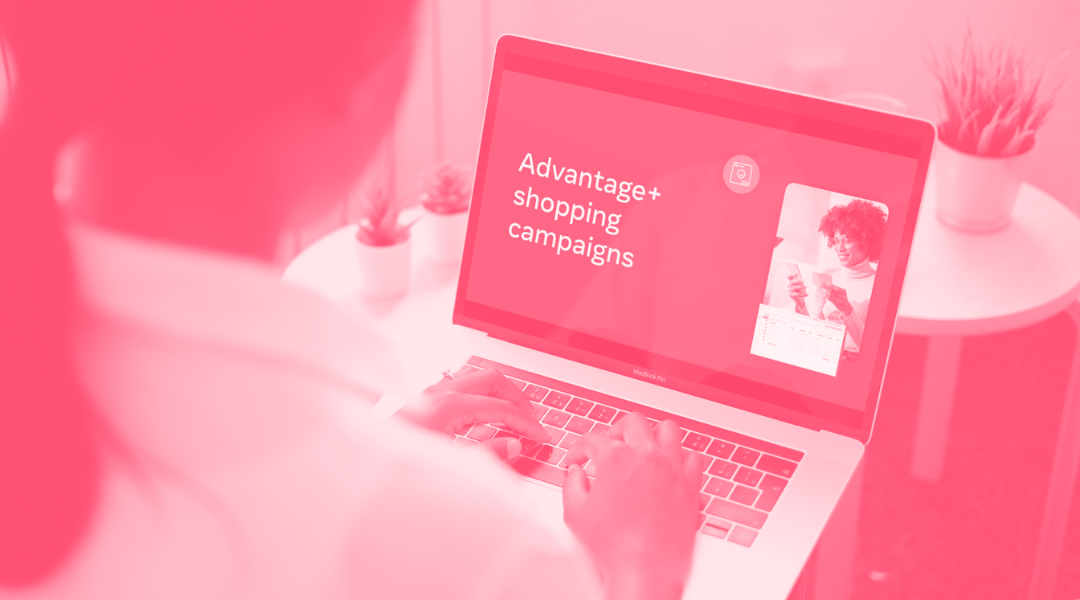How to set up Pinterest Conversion API with Google Tag Manager
The ability to accurately measure the impact of campaigns is crucial to ensuring positive results. For a long time, this measurement relied on...
Plan, activate and control media to hit targets with precision.
Turn data into smart decisions with advanced analytics and modeling.
Efficiency, governance and scale for agencies and teams.
![[Ebook] SEO + AI: eBook to Master AI Overviews and GEO](https://www.adsmurai.com/hubfs/MKT%20-%202025/WEB/Resources%20-%20Banners/HeaderEN_Ebook_SEO+AI.png)
[Ebook] SEO + AI: eBook to Master AI Overviews and GEO
Learn how to structure and distribute your content so generative models can understand it, trust it, and reuse it in their answers. A practical guide to compete and appear in AI Overviews and AI-powered assistants.
Discover more
In the world of digital marketing, the ability to make meaningful connections with your target audience is critical to the success of any campaign. This is where LinkedIn Conversation Ads come into play. This advertising format offers marketers a unique way to engage directly with their audience, encouraging active participation and generating impactful results.
In this article, we'll explore in detail what LinkedIn Conversation Ads are, how they differ from other advertising formats on the platform and how they can make a difference to your marketing efforts. You'll discover the extensive targeting and personalisation possibilities these ads offer, as well as the key benefits they provide to digital marketers. We'll also delve into the importance of data-driven optimisation and how Conversation Ads can drive brand building and lead generation.
TABLA DE CONTENIDOS
Differences between Message Ads and Conversation Ads on Linkedin
Data-driven optimisation to improve the performance of your Conversation Ads
LinkedIn Conversation Ads is one of the advertising formats available within the platform that allows advertisers to engage in interactive and personalised conversations with their target audience. Unlike a traditional ad, Conversation Ads enable dynamic, two-way communication between advertisers and platform users.
This LinkedIn advertising format offers a powerful tool to engage with professionals, personalise messages, generate leads and build meaningful relationships. One of the key strengths of LinkedIn Conversation Ads is its ability to foster targeted, interactive conversations that contribute to the overall effectiveness and success of marketing campaigns on LinkedIn.
When we talk about LinkedIn Conversation Ads, we are referring to ads with the following characteristics:
Message-based ads: primarily messaging is the main communication channel. They appear as sponsored messages in the LinkedIn inbox of targeted users.
Personalised interactions: Advertisers can tailor ad content and messaging based on user profile information such as job title, industry and location. This personalisation helps create a more relevant and engaging experience for the user.
Multiple call-to-action (CTA) options: Offer multiple CTA buttons within the message, allowing users to choose their preferred response or action. These CTAs can include options such as "Learn more", "Sign up", "Download" or even custom CTAs based on the advertiser's objectives.
Interactive components: Advertisers can include interactive elements to encourage engagement and capture user responses. These can include multiple choice questions, polls, surveys or even chatbot-like experiences.
Lead generation: Can be used for lead generation by incorporating lead generation forms directly within the message. Users can submit their information without leaving the LinkedIn platform, simplifying the conversion process.
Targeting options: Advertisers can leverage LinkedIn's robust targeting capabilities to reach specific audiences based on a variety of criteria, such as job title, industry, company size, etc. This allows for precise targeting and increased ad relevance.
LinkedIn Ads offers two types of ad formats that involve messaging: Message Ads and Conversation Ads. While both formats use messaging to reach target audiences, there are key differences between them.
Message Ads
These are standalone sponsored messages that are sent directly to a LinkedIn user's inbox.
They resemble a personalised direct message and can contain text, images and links.
While they allow personalisation by addressing the recipient by name and including relevant details, they do not provide the same level of interactivity as conversational ads.
They are often used for personalised outreach, lead nurturing, event invitations or delivering targeted offers or ads directly to individual users.
They can be sent to specific individuals or to a defined list of recipients, which makes them highly targeted. However, they are limited to one-to-one communication and may require a pre-existing connection or InMail credit.
Conversation Ads
These are interactive advertising experiences that exist within LinkedIn's messaging platform. They are designed as multi-step conversations and can include various elements such as multiple choice questions, custom CTAs, lead generation forms and more.
They offer a higher level of interactivity and personalisation. Advertisers can use branching logic, interactive components and custom CTAs to create dynamic conversations with users.
They allow advertisers to engage in a back-and-forth dialogue, presenting options to users and capturing their responses within the advertising experience.
They excel at driving engagement, lead generation and interactive brand experiences on a large scale. They are ideal for guiding users through a multi-step interaction, collecting user information through lead generation forms, conducting surveys or showcasing product features through interactive content.
They leverage LinkedIn's targeting capabilities, allowing advertisers to reach a broader audience based on various professional attributes such as job title, industry, company size, etc.
Conversation Ads allow brands to have direct, interactive conversations with their target audience. By engaging users with personalised messages, these ads capture attention and encourage active participation, leading to higher engagement rates compared to traditional ad formats.
They are an effective solution for advertisers looking to leverage LinkedIn's extensive user data to personalise the message and tailor it to the individual's professional profile. This level of personalisation makes ads more relevant and resonates with the audience, increasing the chances of generating meaningful interactions.
Not forgetting that LinkedIn is a professional networking platform, Conversation Ads offer the opportunity to establish and nurture relationships with potential clients or business partners. By initiating conversations and delivering value through personalised messaging, brands can build trust, credibility and long-term connections.
In addition, LinkedIn Conversation Ads offer integrated lead generation features. By including lead capture forms directly in the message, advertisers can seamlessly capture lead information without requiring users to navigate to external landing pages. This streamlined process increases the likelihood of conversion and simplifies the user experience.
LinkedIn's robust targeting options allow advertisers to accurately reach their desired audience based on professional attributes such as job title, industry, company size, etc. This targeting ensures that conversational ads reach the most relevant people, maximising campaign impact.
Finally, by initiating conversations with users, Conversation Ads allow brands to create a memorable and interactive brand experience. These interactions not only help raise awareness of the brand and its offerings, but also contribute to positive word-of-mouth and social media sharing, extending the brand's reach organically.
LinkedIn Conversation Ads offers extensive targeting possibilities that benefit the digital marketer in their goal to effectively impact their potential audience. Here are some key aspects of targeting on LinkedIn:
Professional attributes: LinkedIn provides a wealth of professional data that can be leveraged for targeting. You can target your audience based on job title, industry, company size, seniority, skills, etc. This precise targeting ensures that your ads reach the most relevant professionals in your target audience.
Audience expansion: Targeting options also allow you to expand your reach beyond your current connections or followers. You can target people who are similar to your current customers, your website visitors or specific email lists through LinkedIn's "Matching Audiences" feature. This helps you access a larger number of potential customers and amplify the impact of your campaign.
Company and account-based marketing (ABM): If your campaign is focused on targeting specific companies or implementing an account-based marketing strategy, LinkedIn offers company-level targeting. You can target employees of specific companies or even specific departments within those companies. This allows you to tailor your ads to the decision makers and influencers within your target accounts.
Demographic and geographic filters: These allow you to refine your targeting based on demographic factors such as age, gender, education and language preferences. In addition, you can specify the geographic locations you want to target, whether at the country, city or even postcode level. This ensures that your ads reach the right professionals in the desired locations.
Interest targeting: LinkedIn offers interest targeting options to help you reach professionals who have expressed specific interests or affiliations in your profiles. These interests can include professional groups, industry associations, publications or even specific LinkedIn pages. By targeting professionals with relevant interests, you can increase the relevance and effectiveness of your conversational ads.
Retargeting: LinkedIn's Website Retargeting feature allows you to retarget people who have previously visited your website. By placing the LinkedIn Insight tag on your website, you can create custom audiences and send conversational ads to users who have shown interest in your brand, products or services.
LinkedIn Conversation Ads' targeting options enable you to reach the right professionals with precision and relevance. By narrowing your audience based on professional attributes, broadening your reach with matched audiences, implementing account-based marketing, refining demographic and geographic data, leveraging interest-based targeting and retargeting website visitors, you can optimise your ad campaigns to drive higher engagement, conversions and ROI on the LinkedIn platform.
Data-driven optimisation plays an important role in maximising the effectiveness of LinkedIn Conversation Ads for digital marketers.
Firstly, it provides valuable insights into the performance of your Conversation Ads campaign. By analysing data such as impressions, clicks, engagement rates and conversions, you can gain a deeper understanding of what's working and what's not. This data will help you identify areas for improvement and make informed decisions to optimise your campaign.
Through data analysis, you can gain insight into your target audience's behaviour, preferences and interactions with your Conversation Ads. This information allows you to refine your targeting strategies and further personalise your messages. By understanding your audience's needs and preferences, you can create more relevant and engaging advertising experiences.
Data-driven optimisation, on the other hand, allows you to evaluate the performance of different messages, creative elements and CTAs within your ads. By testing and analysing variations of your ads, you will identify the most effective combinations that generate the highest engagement and conversions. This optimisation process ensures that your ads resonate with your audience and produce the desired results.
The data will also help you make informed decisions about budget allocation. By analysing performance data, you can identify high-performing ads and allocate more budget to those campaigns. Conversely, you can identify underperforming ads and optimise them or reallocate budget to more successful initiatives. This optimisation maximises the impact of your ad spend and improves overall campaign effectiveness.
With the above points in mind, data-driven optimisation allows you to establish an iterative and continuous improvement process. By monitoring and analysing data throughout the campaign, you can make real-time adjustments and optimisations. This agile approach ensures that messaging, targeting and creative elements are tailored to maximise campaign performance and deliver better results over time.
Conversation Ads on LinkedIn offer significant potential for brand building. They are a key opportunity to create an interactive brand experience beyond traditional ad formats, allowing you to engage your target audience in a conversational and immersive way. This interactivity fosters a stronger connection between brand and audience, leaving a lasting impression.
As we have seen, one of the main advantages is the ability to deliver personalised messages tailored to each individual's professional profile. By leveraging LinkedIn user data, you can create highly relevant and targeted messages that resonate with your audience. This personalisation enhances the brand experience and demonstrates that the brand understands and values the unique needs and interests of its target audience.
They also establish trust and credibility with your target audience. By initiating meaningful conversations, providing valuable insights and addressing specific pain points, you position your brand as a trusted and expert resource. Trust and credibility is crucial to brand building, as it fosters long-term relationships, loyalty and brand advocacy.
In addition, this LinkedIn ad format provides a platform to showcase thought leadership and brand expertise. Within the conversation format, you can offer informative and valuable content that establishes your brand as a go-to source for industry ideas, best practices and solutions. By positioning the brand as a thought leader, you will enhance your reputation and attract a loyal fan base that values the brand experience.
Engaging users can also generate positive word-of-mouth and social media sharing. When users have a positive experience with the brand and find value in the conversation, they are more likely to share it with their professional network. This organic amplification expands the brand's reach, exposes it to new audiences and increases its visibility and influence in the industry.
Finally, they offer a unique opportunity to differentiate the brand. By offering personalised, interactive experiences, brands can stand out from the competition and showcase their innovative, customer-centric approach. This differentiation helps build a distinctive brand identity and highlights the brand in the minds of the target audience.
Through interactive experiences, personalised messaging, trust building, thought leadership, word of mouth, brand differentiation and long-term loyalty, LinkedIn Conversation Ads help create a strong brand identity, enhance reputation and establish lasting connections with target audiences.

The ability to accurately measure the impact of campaigns is crucial to ensuring positive results. For a long time, this measurement relied on...

In an environment where user privacy and the effectiveness of advertising campaigns are increasingly crucial, Google tools such as Customer Match and...

Meta Advantage+ Shopping Campaigns is one of Meta's Advantage+ products that uses automation to optimise campaigns so that advertisers can sell their...